Although requiring years and decades of effort, alternative livelihood programs are important, writes Vanda Felbab-Brown. And they are far from any effective design and implementation in Mexico, she explains. This piece was originally published by La Reforma’s Mexico Today.
On July 31, the U.S. White House Office of National Drug Control Policy released its annual assessment of opium poppy cultivation in Mexico, praising Mexico for the 2019 record reduction of poppy cultivation to 30,400 hectares (ha) — i.e., by 27 percent from 2018. Under the threat of possible counternarcotics sanctions from the Trump administration, that decline was a welcome reprieve for the Mexican government. The White House statement even went out of its way to acknowledge the alternative livelihood efforts of the Andrés Manuel López Obrador administration. Although requiring years and decades of effort, alternative livelihood programs are important. But they are far from any effective design and implementation in Mexico as I discuss in this week’s column. In my next column, I will explore the hopes for and obstacles to licensing Mexico’s poppy for the production of medical opioids.
Since the 1940s, Mexico has been a principal supplier of heroin to the United States. During WWII, Mexico supplied legal medical opioids for the U.S. war effort. When U.S. demand for morphine declined after the war, the cultivated poppy was processed into heroin instead to supply the U.S. illegal drug market. It flourished particularly in the 1970s, before declining due to U.S.-sponsored eradication and, importantly, the rise of cocaine consumption in the United States.
By 2011, poppy cultivation shot up to 12,000 ha for several reasons and kept increasing since. First, Colombian poppy farmers producing heroin for the U.S. market went out of business in the early 2000s. Second, Mexico’s cannabis farmers lost out to legal cannabis production in the U.S. Third, and most importantly, the U.S. began restricting the prescription of medical opioids as a massive opioid epidemic stimulated by the over-prescription of opioids and egregious malpractices of U.S. pharmaceutical companies raged (and continues to rage) in the U.S. With those addicted to prescription opioids seeking cheaper heroin, Mexico’s poppy cultivation exploded, reaching 44,100 ha in 2017.
Although precise data are lacking, Mexico’s poppy cultivation likely employs tens of thousands of poor, marginalized, often indigenous Mexicans. It is a very labor-intensive illicit economy, enabling its sponsors—organized crime groups—to obtain extensive political capital. In prominent areas of poppy cultivation such as Michoacán, Guerrero, and Sinaloa, the drug economy constitutes a substantial portion of the local economy while state presence is weak, inadequate, sporadic and often repressive.
Access to drug cultivation areas is controlled by drug trafficking organizations (DTOs). They also serve as arbitrators of disputes, providers of public goods, and shapers of local economic options. At the same time, areas of poppy cultivation are often highly violent and contested, with many small and large DTOs as well as anti-crime and crime-coopted militias operating there.
Mexico’s counternarcotics strategy has for decades centered on eradication and interdiction. During the 1970s, eradication was mostly foisted on Mexico by the U.S. and often adopted by the Mexican government reluctantly and haltingly and with substantial subterfuge and deception on the part of Mexican law enforcement.
Under U.S. pressure, the Enrique Peña Nieto administration (2012-2018) once again beefed up eradication, even resorting to controversial aerial spraying. Although President Andrés Manuel López Obrador has disavowed targeting Mexican poppy farmers, some aerial spraying of poppy crops persisted in 2019. In 2018, eradication was estimated to have destroyed between 21,000 and 29,000 ha of poppy. But as farmers often replant after eradication, and drug processing facilities for heroin are easily rebuilt, the suppression efforts did not significantly reduce heroin supply to the U.S.
Poppy eradication campaigns severely complicate efforts of the Mexican military and law enforcement forces to pacify festering Michoacán and Guerrero and rid them of violent organized crime. Counterproductively, they bond poor poppy farmers with the DTOs and further alienate them from the Mexican state. Thus, they undermine efforts to restore public safety and build rule of law in Mexico.
Historically, Mexico showed little interest in adopting alternative livelihoods, even rejecting U.S. assistance for such programs. The rural development efforts that were adopted ended up highly ineffective—sometimes poorly designed and under-resourced, often undermined by extensive corruption by local administrators and political bosses. Projects to promote communal logging, fishing, tourism, and legal agriculture were often undertaken in an ineffective top-down manner.
The fact that the AMLO administration wants to focus on providing alternative livelihoods is a positive development. Alternative livelihoods efforts require extending state presence and engaging in broader and more equitable development. They also require sustaining the resources and political wherewithal to tackle the highly skewed political and economic power distribution in Mexico and the extreme social marginalization of many of its communities. That meshes well with the core of López Obrador’s political project.
But the López Obrador administration has implemented few alternative livelihood efforts, and their design remains most problematic. The administration wants to champion various agricultural support measures for farmers in Mexico, particularly through a food security program. In a visit to Guerrero in January 2019, López Obrador promised to provide price support for grains to dissuade farmers from cultivating opium poppy, setting the price of a ton of corn at US $300. With opium prices in Mexico down due to the significant expansion of poppy cultivation, possibly large inventories of stored heroin, and, importantly, the rise of fentanyl (a synthetic opioid) in the U.S., such a price may be competitive. At US $260 per kilo, about a fifth of the price compared to three years ago, opium poppy cultivation barely covers subsistence needs. The very high likelihood that synthetic opioids, whether produced in China, India, or Mexico, will continue to dominate the U.S. market makes price profitability of legal crops more competitive with opium poppy. Yet, US $300 per ton of corn is nowhere near adequate to help marginalized Mexican farmers escape poverty and profound food insecurity.
Moreover, profitability is not the sole factor influencing farmers’ cropping decisions. Access to land and stable land titles, availability of microcredit, good physical infrastructure, and effective value-added chains, such as processing plants and trade and export facilities, all determine the viability of alternative legal livelihoods.
Poppy also outcompetes many other crops in its ability to grow in areas of poor soil, inadequate water, or difficult climate.
Crucially, good local security is a fundamental factor enabling the takeoff of legal livelihoods. The intense insecurity and minimal state presence in Mexico’s poppy cultivation areas are key obstacles to launching alternative livelihoods efforts. Significantly increasing law enforcement and improving security would be necessary starting points. But despite serious deterioration of public safety in Mexico, the López Obrador administration has not developed an effective security strategy overall, let alone for the poppy areas.
Moreover, the significant contraction of the Mexican economy projected at between 4.6 and 8.8 percent in 2020 could leave the Mexican government with little resources to robustly invest in alternative livelihoods while criminal groups will capitalize on the economic downturn.
Nonetheless in the meantime, the López Obrador administration and the U.S. should explore developing value-added chains and microcredit facilities and helping farmers obtain titles.
Getting those dimensions right is fundamental to the success of any alternative livelihoods efforts.
The Brookings Institution is committed to quality, independence, and impact.
We are supported by a diverse array of funders. In line with our values and policies, each Brookings publication represents the sole views of its author(s).

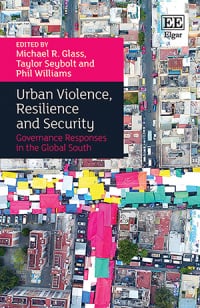



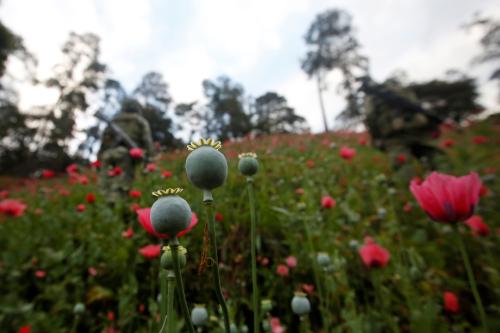
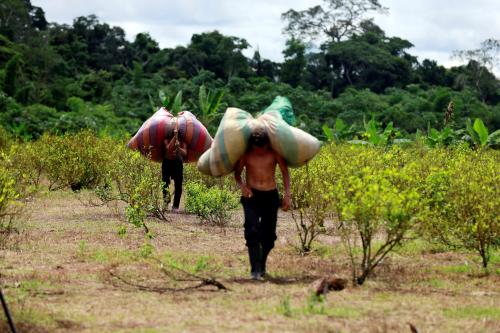

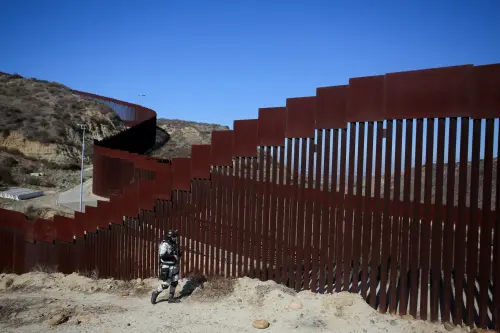

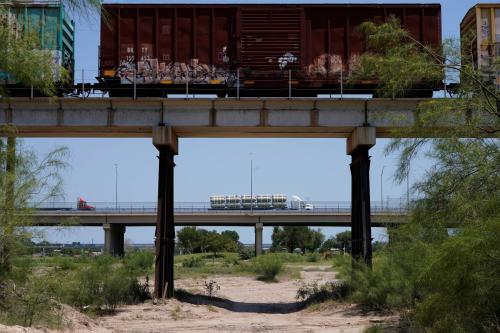
Commentary
Poppy, eradication, and alternative livelihoods in Mexico
August 18, 2020